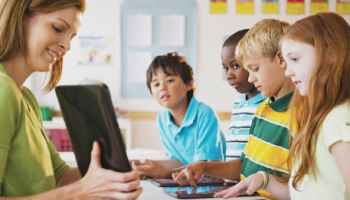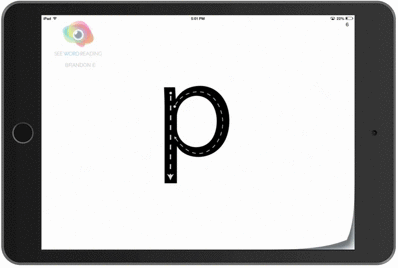What Makes an App Truly Educational? Four Things to Check Out

What Makes an App Truly Educational? Four Things to Check Out
Reading apps for kids There are over 80,000 apps classified as “educational” in the app store. However there is very little criteria provided to help parents know if an app is worth the investment of money. . . and time.
Researchers Kathy Hirsh-Pasek, Jennifer Zosh and colleagues look at this in an article, Putting the Education in “Educational” Apps: Lessons from the Science of Learning, in the journal Psychological Science in the Public Interest. Hirsh- Pasek is the director of the Infant Language Laboratory at Temple University, and Zosh is the Director of the Brandywine Child Development Lab at Penn State University, Brandywine.
In their article, the researchers focus on the fact that app usage has exploded, becoming a ubiquitous part of daily life. In fact, they describe children as un- knowing participants in a “vast, unplanned experiment,” growing up surrounded by smartphones, tablets, and a dizzying array of apps for the various devices, many of which did not exist five years ago.
So with 80,000 educational apps in the app store and no official way to rate them, parents and educators need a simple way to tell which apps are really educational.
Hirsh-Pasek and colleagues seek to answer that question. Read about their criteria below:
Hirsh-Pasek and her colleagues use data from years of research on the science of learning to answer this question. They distill the research to create four principles, or pillars, of learning based on the areas where the research converges. The authors suggest that use of the four pillars can provide a new basis from which to evaluate existing “wave one” apps, and from which to develop new “wave two” apps. The four pillars of learning put forth by the researchers are:
Active involvement: The app must require thinking and intellec- tual manipulation that goes beyond mindless swiping or scrolling.
We’ve all sat endlessly and absentmindedly scrolling through Insta- gram or Facebook, and this is not what we want for our children when they are supposed to be involved in a learning experience.
Engagement with learning materials: According to the authors, three elements of an “engaging” app are: Contingent interactions (each touch of the screen receives an immediate response), extrinsic motivation and feedback (response to child’s actions with clapping or moving to a next level), and intrinsic motivation (channel a player’s unique abilities). Children also need to be free from distractions both in the outside environment, such as background TV, and within the app such as pop ups.
Reading apps for kids Meaningful experiences: Meaning is based on the quality and quantity of connections between the app experience and the wider experience of a child’s life. For example, an app that connects a student’s experiences in the community at a grocery store combined with their academic knowledge of coins and money would be meaningful to the child’s life as they navigate an app that has them selling groceries.
Social interaction: Social interaction itself enables learning, and social contingency, the back and forth of interaction, is a key factor in learning. Apps can harness this through character responses to selections that the children make, through partner work on an app, or through videoconferencing.
The authors assert that an app that includes these four pillars within the context of a learning goal would be a truly educational app.
Read the article from New America.org here:
See Words was developed in connection with the University of Cincinnati’s School of Education and includes many of the criteria above.
We invite you to check out See Words: School and See Words: Home in the app store and See Words: Anywhere – our free browser extension that can transform any digital content into an educational opportunity.

Want a Step-by-Step Easy Path to Learn to Read?
See Words: School lays out the fundamental steps in 14 engaging lessons using proven multi-sensory methods and phonics. Download the suite of apps from the Apple App Store now.